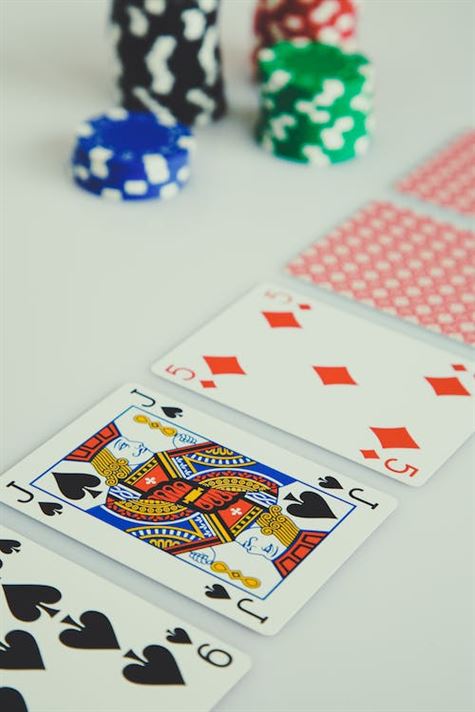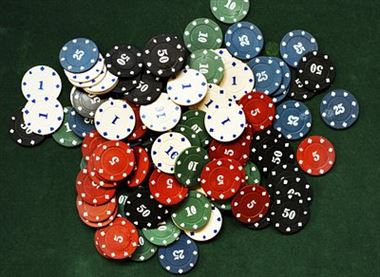Poker is a game of skill, strategy, and mathematics. Understanding the mathematical aspects of poker is crucial for any serious player looking to improve their game. By applying mathematical concepts and strategies, players can make more informed decisions, increase their chances of winning, and ultimately become more successful at the poker table.
In this guide, we will explore the world of poker math and strategies, providing you with the knowledge and tools to enhance your gameplay. We will delve into fundamental mathematical concepts such as probability, expected value, and pot odds, and demonstrate how these concepts can be applied to make optimal decisions in various poker scenarios.
Additionally, we will discuss different poker strategies, including tight-aggressive play, bluffing, and hand reading. By understanding these strategies and incorporating them into your gameplay, you can gain a competitive edge over your opponents and maximize your chances of success.
Whether you are a beginner looking to grasp the basics or an experienced player seeking to refine your skills, this guide will serve as a valuable resource to help you improve your poker game. So, let’s dive into the world of poker math and strategies and take your gameplay to the next level.
The Importance of Poker Mathematics in Improving Your Game
Poker is a game of skill, strategy, and a little bit of luck. While many players rely on their instincts and intuition to make decisions at the poker table, there is another aspect of the game that is often overlooked: poker mathematics. Understanding the numbers and probabilities involved in poker can greatly improve your game and give you an edge over your opponents.
One of the most important aspects of poker mathematics is understanding pot odds. Pot odds refer to the ratio of the current size of the pot to the cost of a contemplated call. By calculating pot odds, you can determine whether or not a particular bet or call is profitable in the long run. For example, if the pot is $100 and your opponent bets $20, you would need to win at least 20% of the time in order for a call to be profitable. By understanding pot odds, you can make more informed decisions and avoid making costly mistakes.
Another important concept in poker mathematics is expected value (EV). EV is a way to measure the average outcome of a particular decision or play. By calculating the expected value of different actions, you can determine which play is the most profitable in the long run. For example, if you have a 50% chance of winning a $100 pot and a 50% chance of losing, the expected value of calling a $50 bet would be $0. By understanding expected value, you can make decisions that maximize your long-term profitability.
Understanding poker mathematics also involves understanding the concept of outs. Outs are the cards that can improve your hand and potentially win you the pot. By calculating the number of outs you have, you can determine the probability of hitting your hand on the next card. For example, if you have a flush draw with nine outs, you have approximately a 36% chance of hitting your flush on the next card. By understanding outs and probabilities, you can make more accurate decisions about whether or not to continue in a hand.
In addition to pot odds, expected value, and outs, understanding poker mathematics also involves understanding the concept of equity. Equity refers to the share of the pot that belongs to you based on your chances of winning the hand. By calculating your equity, you can determine whether or not a particular play is profitable in the long run. For example, if you have a 50% chance of winning a $100 pot, your equity in the pot would be $50. By understanding equity, you can make decisions that maximize your share of the pot.
In conclusion, poker mathematics is a crucial aspect of the game that can greatly improve your skills and give you an edge over your opponents. By understanding concepts such as pot odds, expected value, outs, and equity, you can make more informed decisions and increase your long-term profitability. While poker is a game of skill and strategy, it is also a game of numbers. So, the next time you sit down at the poker table, remember to consider the mathematics behind the game and watch your game improve.
Essential Strategies for Calculating Pot Odds in Poker
Poker is a game of skill and strategy, and one of the most important aspects of the game is understanding and calculating pot odds. Pot odds refer to the ratio of the current size of the pot to the cost of a contemplated call. By understanding pot odds, players can make more informed decisions about whether to call, raise, or fold.
Calculating pot odds may seem daunting at first, but with practice, it becomes second nature. The first step is to determine the size of the pot. This includes the bets and raises made by all players in the current round of betting. Once the pot size is established, the next step is to determine the cost of a contemplated call. This is the amount of money a player needs to put into the pot to stay in the hand.
Once the pot size and the cost of a call are known, the pot odds can be calculated. Pot odds are expressed as a ratio, such as 2:1 or 3:2. For example, if the pot size is $100 and the cost of a call is $50, the pot odds would be 2:1. This means that for every $1 a player puts into the pot, they have the potential to win $2.
Understanding pot odds is crucial because it allows players to determine whether a call is profitable in the long run. If the pot odds are greater than the odds of completing a drawing hand, it is generally a good idea to make the call. On the other hand, if the pot odds are lower than the odds of completing a drawing hand, it is usually best to fold.
To calculate the odds of completing a drawing hand, players need to know the number of outs they have. Outs are the cards that will improve a player’s hand. For example, if a player has four cards to a flush, there are nine remaining cards of that suit in the deck. Therefore, the player has nine outs to complete their flush.
Once the number of outs is determined, players can use a simple formula to calculate the odds of completing their drawing hand. The formula is (number of outs / number of unseen cards) x 100. For example, if a player has nine outs and there are 47 unseen cards, the odds of completing the drawing hand would be (9/47) x 100, which is approximately 19%.
By comparing the pot odds to the odds of completing a drawing hand, players can make more informed decisions about whether to call, raise, or fold. If the pot odds are higher than the odds of completing a drawing hand, it is generally a profitable call. However, if the pot odds are lower than the odds of completing a drawing hand, it is usually best to fold.
In conclusion, understanding and calculating pot odds is an essential strategy in poker. By knowing the size of the pot, the cost of a call, and the number of outs, players can make more informed decisions about whether to stay in a hand or fold. By mastering pot odds, players can improve their overall game and increase their chances of winning. So, the next time you sit down at the poker table, remember to consider the pot odds before making your move.
Mastering Pre-Flop Strategy: Key Concepts and Tips
Poker is a game of skill and strategy, and mastering the pre-flop strategy is crucial to improving your game. The pre-flop stage is the first betting round, where players are dealt their hole cards and make their initial decisions. Understanding key concepts and tips for this stage can give you a significant advantage at the poker table.
One of the fundamental concepts in pre-flop strategy is hand selection. Not all starting hands are created equal, and knowing which hands to play and which to fold is essential. The strength of your starting hand should be evaluated based on factors such as position, table dynamics, and your opponents’ tendencies. For example, a strong hand like pocket aces or kings should be played aggressively, while weaker hands like 7-2 offsuit should be folded in most situations.
Position is another critical factor to consider in pre-flop strategy. Your position at the table determines the order in which you act, and it can significantly impact your decision-making process. Being in late position, such as the dealer or the players to the right of the dealer, gives you more information about your opponents’ actions before you have to act. This allows you to make more informed decisions and potentially play a wider range of hands. On the other hand, being in early position, such as the small blind or big blind, requires more caution as you have less information about your opponents’ hands.
Understanding the concept of pot odds is also crucial in pre-flop strategy. Pot odds refer to the ratio of the current size of the pot to the cost of a contemplated call. By comparing the pot odds to the odds of completing your hand, you can make mathematically informed decisions. For example, if the pot odds are higher than the odds of completing your hand, it may be profitable to call. Conversely, if the pot odds are lower, it may be more prudent to fold.
Another important aspect of pre-flop strategy is adjusting your play based on your opponents’ tendencies. Observing how your opponents play their hands can provide valuable information that can be used to exploit their weaknesses. For example, if you notice that a player is consistently raising with weak hands, you can adjust your strategy by re-raising or calling with stronger hands to take advantage of their aggression. Similarly, if a player is playing tight and only entering pots with premium hands, you can exploit their tightness by stealing blinds and playing more aggressively against them.
In addition to these key concepts, there are several tips that can help improve your pre-flop strategy. Firstly, avoid playing too many hands. It can be tempting to get involved in every hand, but playing too many weak hands will lead to losses in the long run. Secondly, be aware of your table image. If you have been playing tight and folding most hands, your opponents are more likely to give you credit for a strong hand when you do decide to play. Exploiting this image can help you win pots without having to show your cards.
Lastly, always be mindful of your stack size. Your stack size relative to the blinds and antes can influence your decision-making process. If your stack is short, you may need to take more risks and play more aggressively to accumulate chips. Conversely, if your stack is deep, you can afford to be more patient and wait for premium hands.
Mastering pre-flop strategy is a crucial step towards becoming a successful poker player. By understanding key concepts such as hand selection, position, pot odds, and adjusting to your opponents, you can make more informed decisions and increase your chances of winning. Remember to always be mindful of your table image and stack size, and never stop learning and improving your game. With practice and dedication, you can take your poker skills to the next level and become a formidable opponent at the poker table.
Understanding Expected Value (EV) in Poker: Maximizing Your Profits
Poker is a game of skill and strategy, where players must make calculated decisions based on the information available to them. One of the key concepts in poker is understanding expected value (EV) and how it can be used to maximize your profits.
Expected value is a mathematical concept that represents the average outcome of a situation over the long run. In poker, it is used to determine the profitability of a particular play or decision. By calculating the expected value of a play, players can make informed choices that will increase their chances of winning.
To understand expected value in poker, let’s consider a simple example. Imagine you are playing a hand of Texas Hold’em and you are dealt two cards: a King of spades and a Queen of hearts. The flop comes down with a King of hearts, a 10 of diamonds, and a 7 of clubs. You have a pair of Kings, which is a strong hand. However, there are still two more cards to be dealt, and your opponent could potentially have a better hand.
To calculate the expected value of your hand, you need to consider the probability of different outcomes. For example, what is the probability that your opponent has a better hand than you? What is the probability that you will improve your hand on the turn or river? By assigning probabilities to these different outcomes, you can calculate the expected value of your hand.
Let’s say that you estimate there is a 20% chance that your opponent has a better hand than you. In this case, the expected value of your hand would be 0.8 times the pot size, since you have an 80% chance of winning. If the pot is $100, then the expected value of your hand would be $80.
Now, let’s consider a different scenario. Imagine you are playing the same hand, but this time the flop comes down with a 2 of spades, a 5 of diamonds, and a 9 of clubs. In this case, you don’t have a pair, and your hand is not as strong. However, there is still a chance that you could improve your hand on the turn or river.
To calculate the expected value of your hand in this scenario, you need to consider the probability of improving your hand. Let’s say that you estimate there is a 30% chance of improving your hand on the turn or river. In this case, the expected value of your hand would be 0.3 times the pot size, since you have a 30% chance of winning. If the pot is $100, then the expected value of your hand would be $30.
By understanding expected value, you can make better decisions in poker. If the expected value of a play is positive, it means that the play is profitable in the long run. On the other hand, if the expected value is negative, it means that the play is not profitable and should be avoided.
Maximizing your profits in poker requires making plays with positive expected value. This means making decisions that have a higher probability of winning than losing. By calculating the expected value of different plays, you can identify the most profitable options and increase your chances of success.
In conclusion, understanding expected value is crucial for improving your poker game. By calculating the expected value of different plays, you can make informed decisions that will maximize your profits. Remember, poker is a game of skill and strategy, and by using mathematical concepts like expected value, you can gain an edge over your opponents and become a more successful player.
Advanced Post-Flop Strategies: Analyzing Board Texture and Ranges
In the world of poker, mastering the art of post-flop play is crucial for success. While pre-flop strategies are important, it is during the post-flop stage that the game truly comes alive. One key aspect of post-flop play is analyzing board texture and ranges, which can provide valuable insights into your opponents’ hands and help you make more informed decisions.
Board texture refers to the composition of the community cards on the table. Is the board dry, meaning it lacks potential draws and is unlikely to change significantly? Or is it wet, with numerous possible draws that could drastically alter the strength of hands? Understanding the texture of the board allows you to assess the range of hands your opponents might have.
When analyzing board texture, it is essential to consider the possible combinations of hands that your opponents could hold. For example, on a board with three low cards, it is more likely that your opponents have connected with the board in some way. Conversely, on a board with three high cards, it is less likely that your opponents have strong hands. By narrowing down the possible ranges of your opponents, you can make more accurate decisions.
Another crucial factor to consider when analyzing board texture is the presence of potential draws. If the board contains suited or connected cards, there is a higher likelihood that your opponents have draws to flushes or straights. This information can help you determine the strength of your own hand and make appropriate bets or raises.
Understanding your opponents’ ranges is equally important in post-flop play. A range refers to the possible hands that your opponents could have based on their actions throughout the hand. By observing their betting patterns, you can narrow down their range and make more informed decisions.
For example, if an opponent raises pre-flop and continues to bet aggressively on a low, dry board, their range is likely to consist of strong hands. Conversely, if an opponent checks and calls on a wet board, their range may include weaker hands or draws. By analyzing their range, you can adjust your own strategy accordingly.
Transitional phrase: Now that we have discussed the importance of analyzing board texture and ranges, let’s explore some advanced post-flop strategies that can help improve your game.
One effective strategy is to use blockers to your advantage. A blocker is a card that reduces the likelihood of your opponents having a certain hand. For example, if the board contains three hearts and you hold the Ace of hearts, you block your opponents from having a flush draw. By considering the blockers in your hand, you can make more accurate assessments of your opponents’ ranges and adjust your betting accordingly.
Another advanced post-flop strategy is to utilize the concept of equity realization. Equity refers to the share of the pot that you are expected to win based on the strength of your hand. Equity realization, on the other hand, refers to your ability to extract that equity from your opponents. By considering the board texture and your opponents’ ranges, you can make more precise decisions that maximize your equity realization.
In conclusion, analyzing board texture and ranges is a crucial aspect of advanced post-flop strategies in poker. By understanding the composition of the board and narrowing down your opponents’ possible hands, you can make more informed decisions and improve your overall game. Additionally, utilizing blockers and considering equity realization can further enhance your post-flop play. So, next time you sit down at the poker table, remember to pay close attention to the board and your opponents’ ranges, and watch your game reach new heights.
Bankroll Management: How to Safeguard Your Poker Funds for Long-Term Success
Poker is a game of skill, strategy, and a little bit of luck. To be successful in poker, players must not only have a solid understanding of the game’s rules and mechanics but also be able to make calculated decisions based on mathematical probabilities. This is where poker math comes into play.
Poker math is the study of probabilities and odds in poker. It involves understanding the likelihood of certain events occurring and using that information to make informed decisions at the poker table. By understanding poker math, players can gain an edge over their opponents and improve their chances of winning.
One of the most important aspects of poker math is bankroll management. Bankroll management is the practice of safeguarding your poker funds to ensure long-term success. It involves setting limits on how much money you are willing to risk and sticking to those limits, regardless of the outcome of individual hands or sessions.
The first step in bankroll management is determining your poker bankroll. Your bankroll is the total amount of money you have set aside specifically for playing poker. It should be an amount that you can afford to lose without it affecting your daily life or financial stability. Once you have determined your bankroll, you can then establish guidelines for how much you are willing to risk in each poker session.
A common rule of thumb in bankroll management is the 5% rule. This rule suggests that you should never risk more than 5% of your bankroll in a single poker session. For example, if your bankroll is $1,000, you should not play in a game where the buy-in is more than $50. This rule helps to protect your bankroll from significant losses and allows you to continue playing even if you experience a few bad beats.
Another important aspect of bankroll management is understanding variance. Variance is the natural ups and downs that occur in poker due to the element of luck. Even the best players in the world can experience losing streaks or bad runs of cards. By understanding variance and accepting that it is a part of the game, you can better manage your bankroll and avoid going on tilt.
Going on tilt is a term used to describe a player who becomes emotionally frustrated or agitated due to a series of losses. When a player is on tilt, they often make irrational decisions and play poorly, which can lead to even more losses. To avoid going on tilt, it is important to have a solid bankroll management plan in place and to stick to it, regardless of the outcome of individual hands or sessions.
In addition to bankroll management, there are several other strategies that can help improve your poker game. These include understanding position, reading your opponents, and knowing when to bluff. By incorporating these strategies into your gameplay and combining them with a solid understanding of poker math, you can greatly increase your chances of success at the poker table.
In conclusion, bankroll management is a crucial aspect of poker that should not be overlooked. By setting limits on how much money you are willing to risk and sticking to those limits, you can safeguard your poker funds for long-term success. Additionally, by understanding poker math and incorporating other strategic elements into your gameplay, you can improve your overall poker game and increase your chances of winning. So, take the time to study poker math, develop a solid bankroll management plan, and watch your game improve. In conclusion, understanding poker math and implementing effective strategies can greatly improve one’s game. By studying the probabilities and odds involved in different poker situations, players can make more informed decisions and increase their chances of winning. Additionally, developing a solid strategy that takes into account factors such as position, hand strength, and opponent behavior can give players a competitive edge. Overall, a combination of poker math knowledge and strategic thinking is essential for improving one’s game and achieving success in poker.




